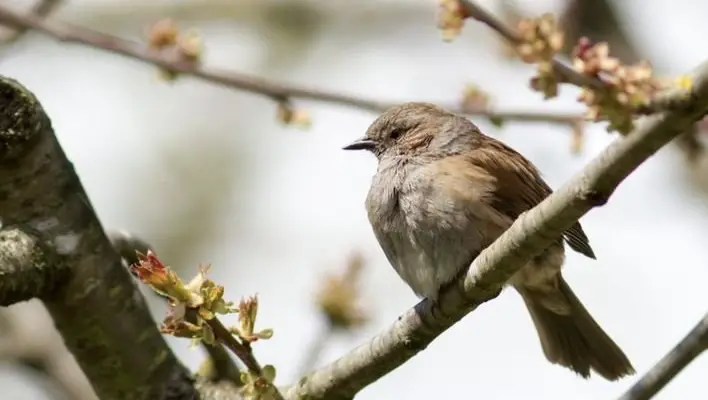Garden birds are usually an indicator of a healthy ecosystem. For this reason, many people encourage and attract as many birds to their gardens as possible by providing bird feeders, bird fountains, and nesting boxes.
According to the British Ornithologists Union, the United Kingdom is home to 626 species of birds. This diversity offers birds in all shapes, sizes, and colours. One of the most common physical attributes of birds is brown plumage. Despite the shared brown colouration, each bird is unique and special.
Here are the nine most common little brown birds in the United Kingdom and how to identify them and differentiate them from the other brown birds.
List of Little Brown Birds in the UK
The nine most common little brown birds in the UK are:
- House Sparrow
- Marsh Tit
- Dunnock
- Wren
- Robin
- Song Thrush
- Goldfinch
- Chaffinch
- Jay
Let’s look at each of these birds more closely to learn how to identify them and differentiate them from the other brown birds.
1. House Sparrow
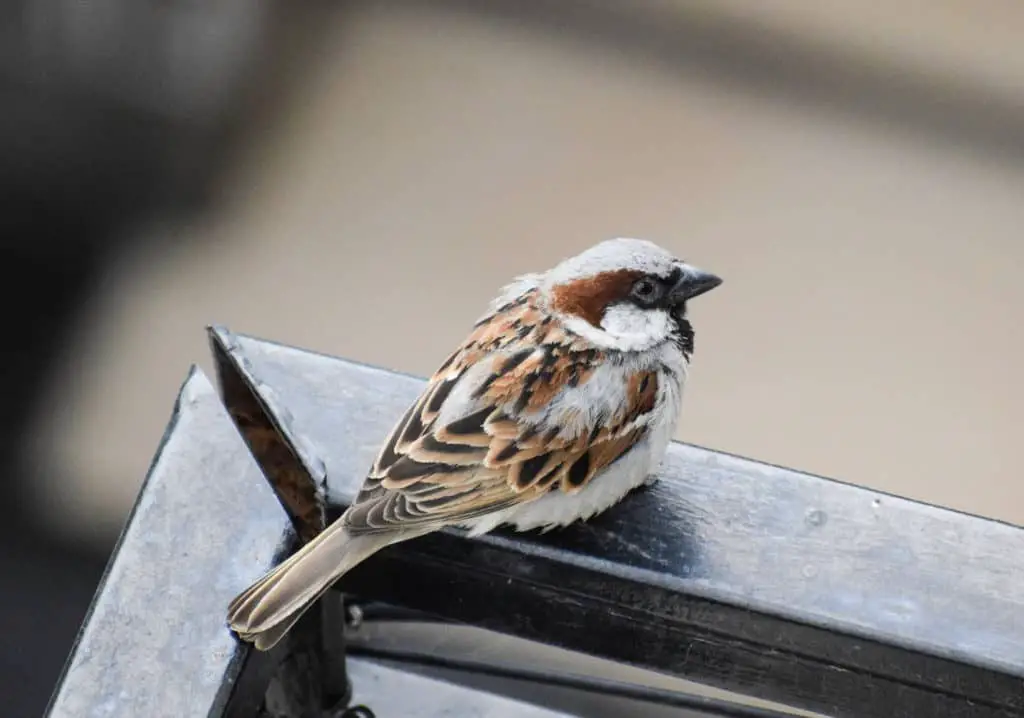
House Sparrows are one of the most common little brown birds found in the UK. Male House Sparrows have streaky chestnut-brown upperparts and grey underparts. Their wings are also a chestnut-brown color with white wing bars. They have a large black bib and grey cap. Female and juvenile House Sparrows can be identified by their drab brown colorings. House Sparrows are notorious for their large colonies and group nesting habits. Both male and female House Sparrows will incubate the three to five eggs and raise the young together.
2. Marsh Tit
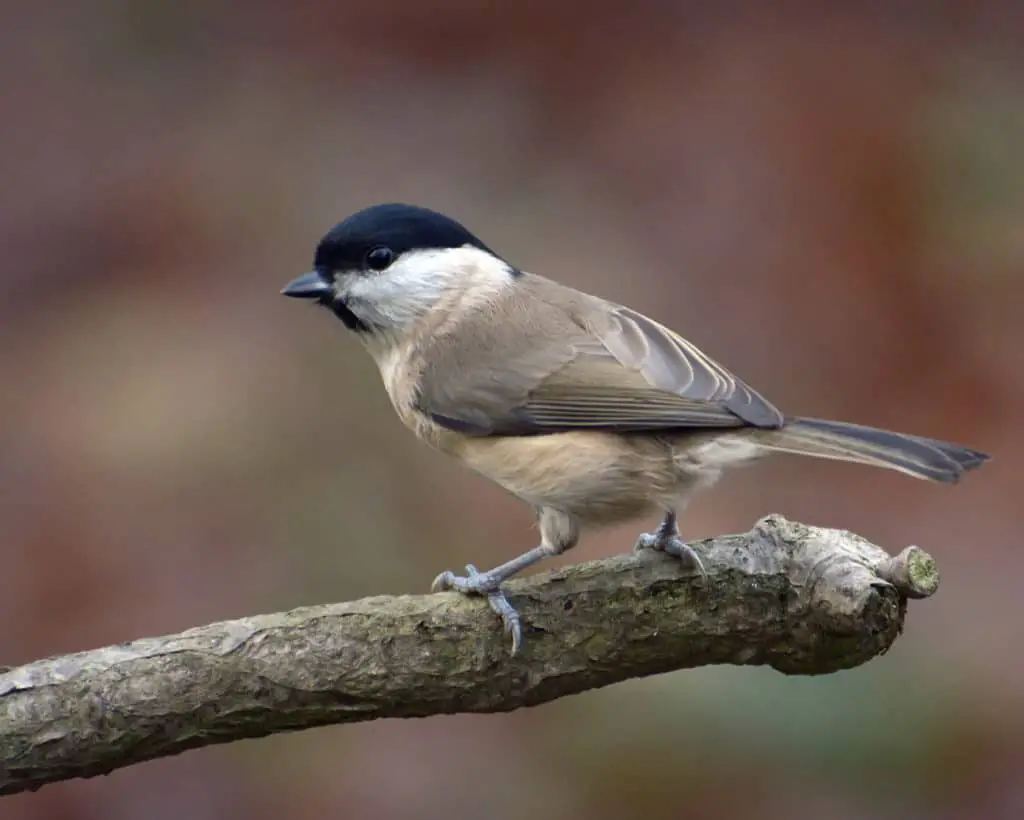
Despite their name, the Marsh Tit prefers woodland and parks throughout England and Wales. The Marsh Tit is identifiable by its all-brown body, pale belly and face, shiny black cap, and little black bib. The Marsh Tit closely resembles the Willow Tit; however, they can be distinguished by their calls. The Willow Tit makes a ‘zee-zurzur-zur’ call, while the Marsh Tit makes a ‘pitchou’ call. Marsh tits can be attracted to large gardens by placing peanuts, sunflower seeds, and fat balls in bird feeders.
3. Dunnock
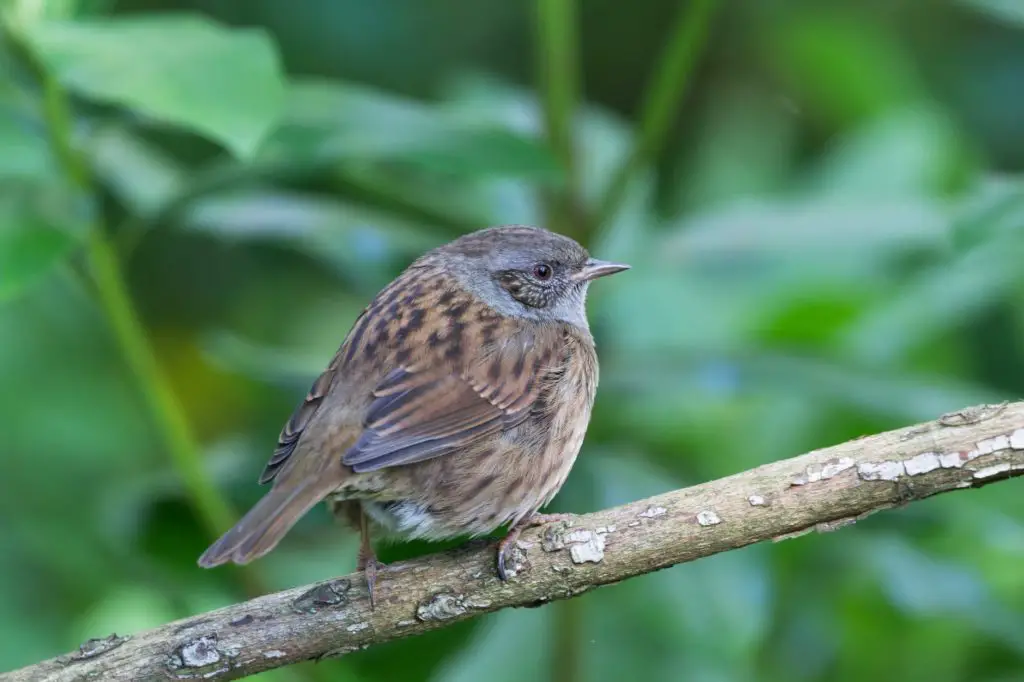
Dunnocks are widespread across the United Kingdom and prefer areas with plenty of vegetation, such as woodlands and urban areas. They are most often seen around hedgerows, looking for insects. Though they rarely visit bird feeders, they will gather the food that is scattered on the ground. Dunnocks have grey chests and heads and dark streaks on their wings. This little brown bird closely resembles the House Sparrow; however, they can be distinguished by the shape of their bills. Dunnocks have thin and pointy bills while the House Sparrows have short, broader bills. During the breeding season, Dunnocks nests are often favoured by Cuckoos. Once the Cuckoo chick hatches, it will push the other eggs out of the nest to ensure its own survival. Due to this potentially devastating threat to the species’ survival, Dunnocks can raise several broods of chicks per year.
4. Wren
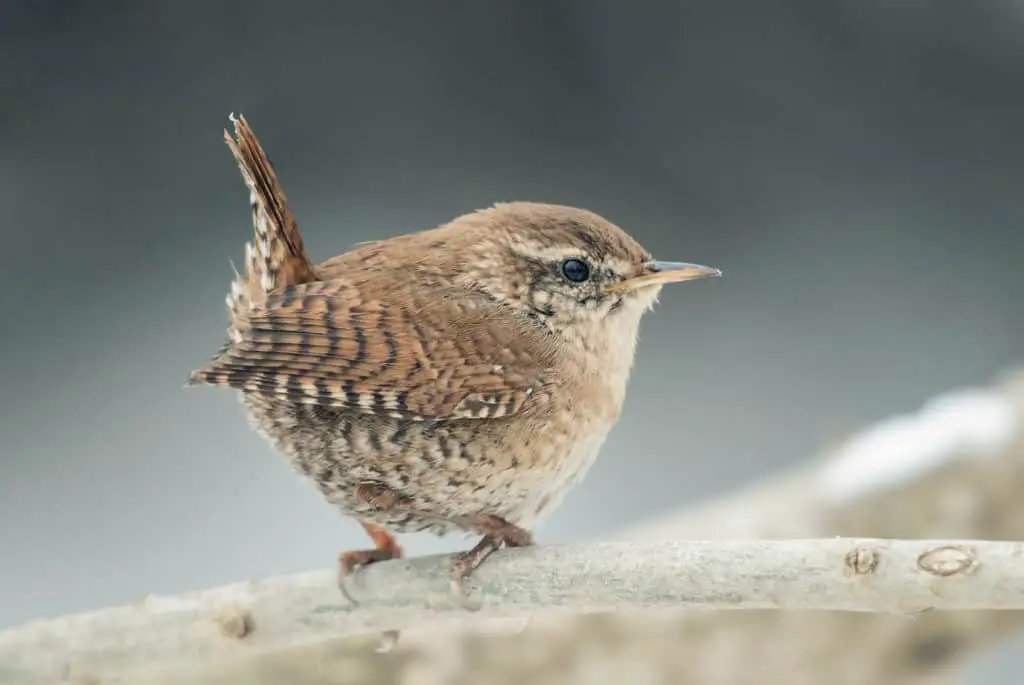
Wrens are found throughout the United Kingdom in gardens, farmlands, and woodlands. Wrens are known for their plump little bodies, pale greyish underparts, and dark brown wings. They have a short, cocked tail and a sharp bill. The best way to catch a glimpse of this bird is to listen for its loud song. Unfortunately, these birds do not fare well in the cold weather. Their numbers drop significantly in the winter due to the freezing temperatures and the lack of insect prey. According to folklore, it was said that the bird who flew the highest would take the crown. The Wren was crowned the king of birds by riding on the back of an eagle.
5. Robin
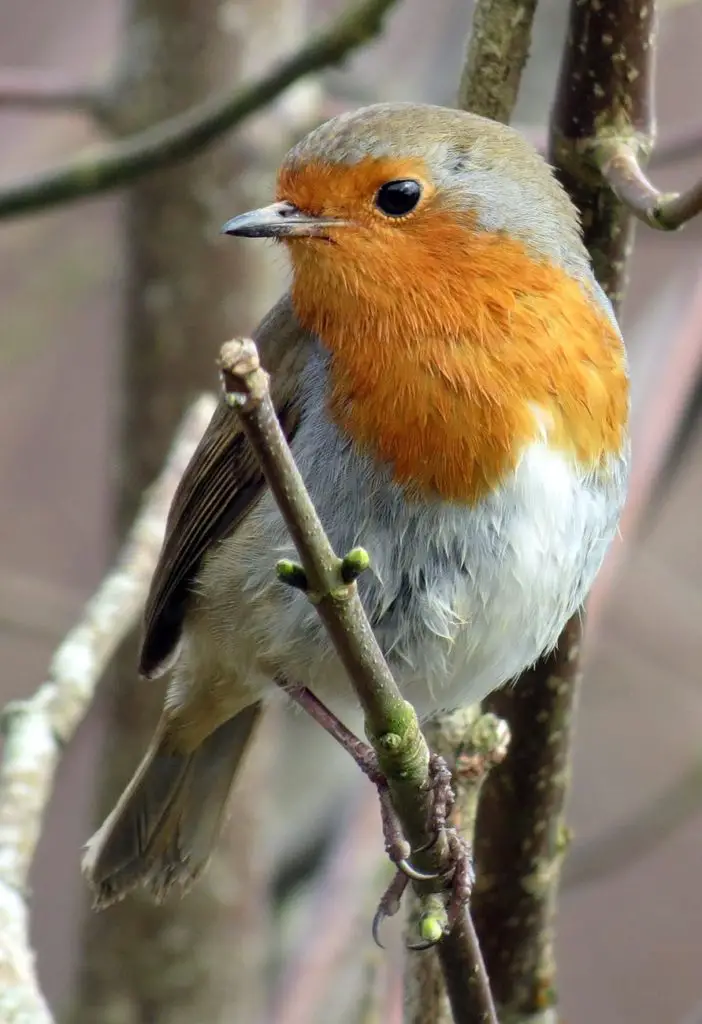
Easily the most recognisable little brown bird, the Robin is found across the United Kingdom. They fiercely defend their territory. In fact, their signature red chests are one of their defence mechanisms. The Robin has a brown back and a white belly. Its iconic orange-red chest covers their throats and faces. Juvenile Robins are all brown with mottles golden flecks. Robins feed on fruits, seeds, insects, and earthworms. They are very creative when nesting and often breed in unusual places, such as in post boxes.
6. Song Thrush
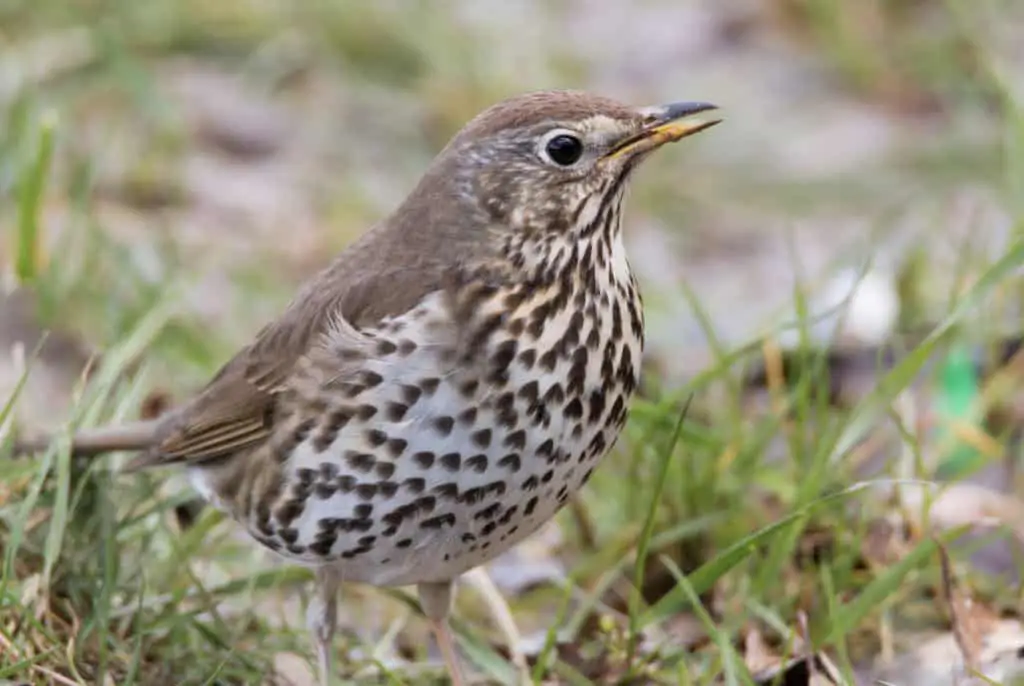
Song Thrushes are widespread throughout Europe and are often seen in parks, gardens, and woodland areas. Song Thrushes can be identified by their brown upper body. Their bellies are white with black tear-drop-shaped spots. They closely resemble the Mistle Thrush; however, the Song Thrush is smaller, has a warmer brown shade, and lacks the white eye stripe and red flank patches. Earthworms make up the majority of this bird’s diet; however, they resort to eating snails during the winter when the ground is too hard. To access the meat inside the snail’s shell, the Song Thrush will take the snail and crack open the shell by banging it against a rock or ‘anvil.’
7. Goldfinch
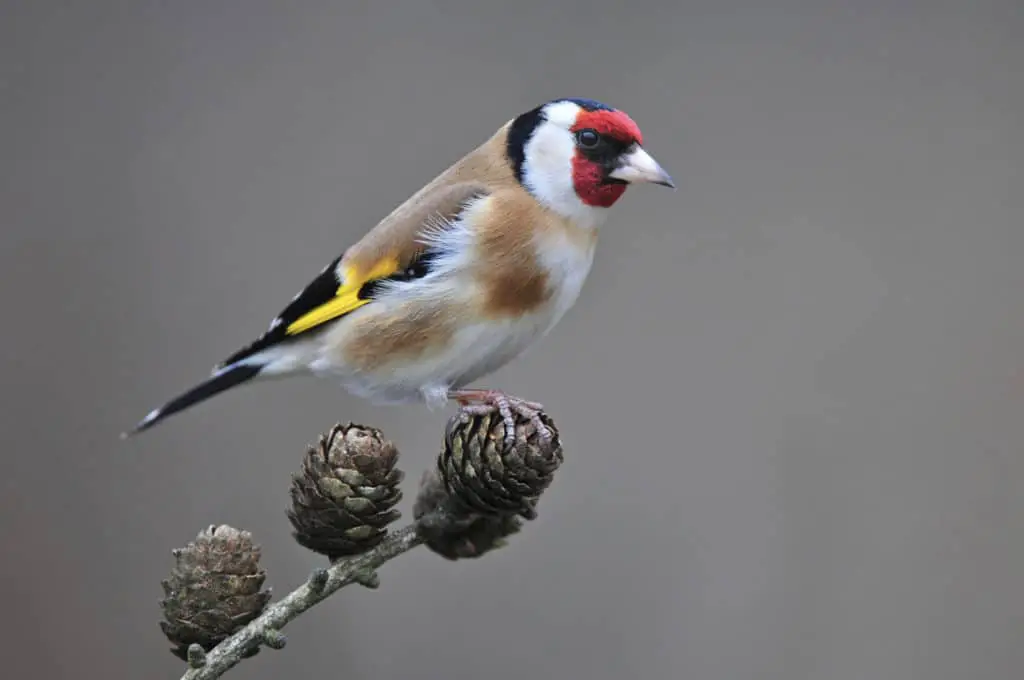
Goldfinches are found throughout the United Kingdom, except for the mountainous areas in Scotland. Most goldfinches remain in the UK year-round, but some birds have been found migrating as far south as Spain. Goldfinches are identifiable by their signature bright red faces, black caps, and black markings around their eyes. Their bodies are light brown with greyish white chests. Their wings are black, with bright yellow patches visible when their wings are expanded. Juvenile goldfinches lack the signature face markings and instead sport a brown and grey face. The Goldfinch’s bill is short and powerful, allowing them to access seeds from plants most other birds cannot reach, such as from thistles.
8. Chaffinch
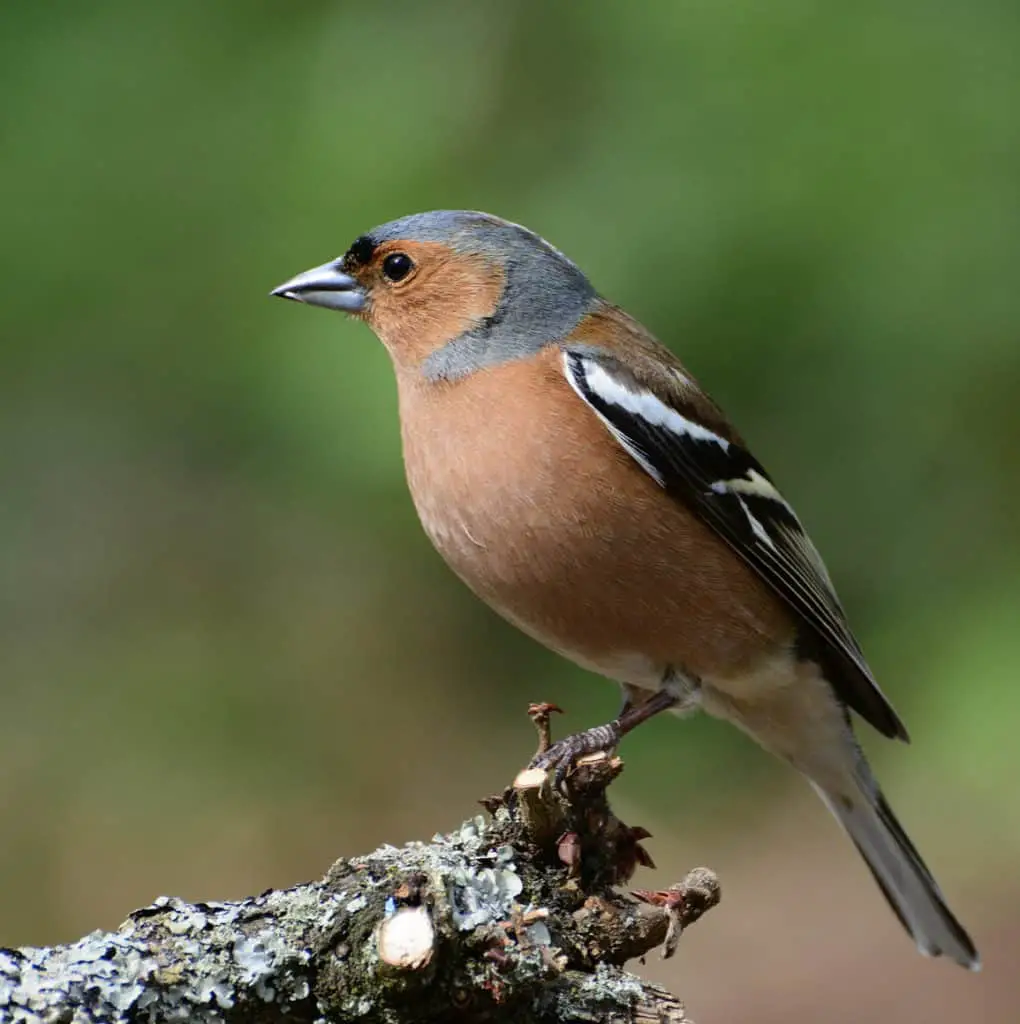
One of the most common birds in the United Kingdom is the Chaffinch. These birds prefer woodland and farmland areas; however, they are also seen in parks and gardens. Male Chaffinches have vibrant orange and reddish-brown plumage on their chests, backs, and faces. They sport a greyish-blue cap and black and white wings and tails. Female Chaffinches are usually duller and may sport hints of green and yellow plumage. Chaffinches are known for their songs and wide variety of calls. In the past, chaffinches were presented as songbirds, and competitions were held to see which birds could repeat theirsong most often.
9. Jay
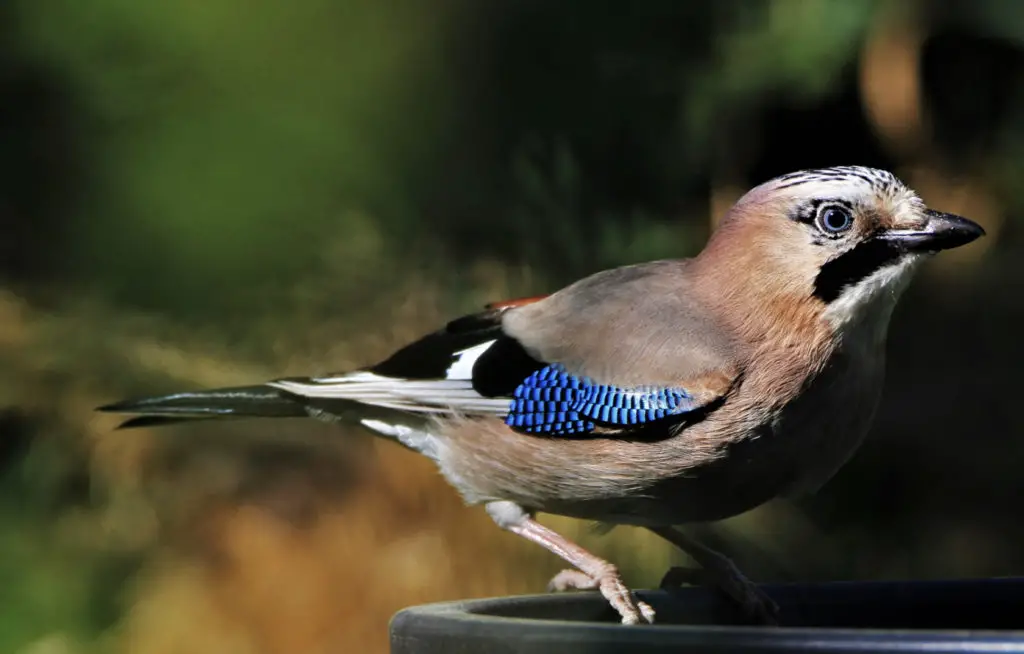
Jays are found throughout the United Kingdom, except for Northern Scotland. Jays have pale pinkish-brown plumage on their upper and lower bodies. Their heads are a crown of white feathers with black streaks and a black stripe running from theirblack bills to their necks. Their wings are black and white with a panel of electric blue feathers. Their tails are also black and white. Jays are known for their ‘screeching’ call and their love of acorns. Jays will search the forests for acorns and then hide them away, storing them for the winter months. Since not all acorns are recovered, many of them grow into oak trees.
Final Thoughts
Although there are many birds that share the brown colouration, each bird has unique characteristics that help it stand out and make it unique. Whether it is their interesting plumage patterns or their interesting call, each brown bird displays unique characteristics. With practice and careful observation, identifying and differentiating little brown birds should be much easier. If you wish to attract more little brown birds to your garden, set up a bird feeder and fill them with sunflower seeds, peanuts, and fat balls. Most birds will eagerly take up your offer of food. Then sit back, and enjoy birdwatching.

